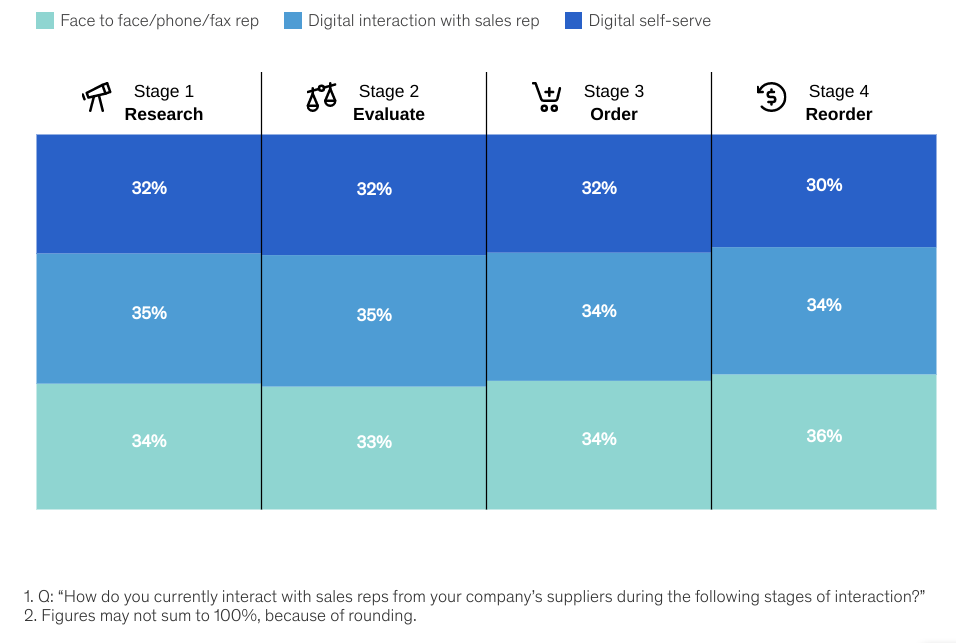We do not yet know whether Covid business-to-business sales processes have changed permanently or not. But a McKinsey survey suggests at least 30 percent of sales journey operations are conducted entirely on a “self serve” basis, not face to face. About 32 percent of B2B research, evaluation and ordering operations are conducted digitally.

source: McKinsey
About 34 percent to 36 percent of sales processes are conducted digitally with a sales person. Only about 34 percent to 36 percent of such processes are conducted face to face.
Altogether, roughly two thirds of B2B transactions are conducted digitally, not face to face, by phone or fax.
Compared go pre-Covid patterns, fewer sales are concluded in person; more are conducted using video conferencing, online, by email or e-commerce methods.

source: McKinsey
The survey suggests growing comfort with remote interactions. In April 2020 only 27 percent of respondents thought the remote sales processes were more effective than face-to-face methods. By February 2021 that percentage had grown to 58 percent.
Fully 87 percent of respondents believed they would continue with remote interactions for at least a year after the pandemic ends.

source: McKinsey

